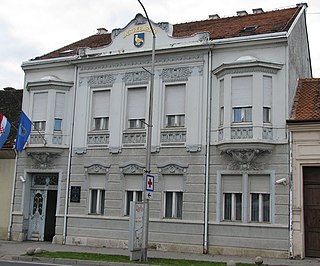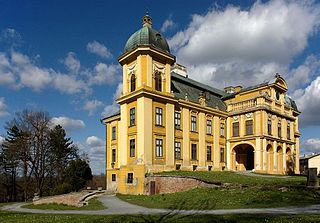
Našice is a town in eastern Croatia, located on the northern slopes of the Krndija mountain in eastern Slavonia, 51 km southwest of regional hub Osijek. Administratively it belongs to Osijek-Baranja County.

Bjelovar-Bilogora County is a county in central Croatia.

Županja is a town in eastern Slavonia, Croatia, located 254 km east of Zagreb. It is administratively part of the Vukovar-Srijem County. It is inhabited by 12,090 people (2011).

Klanjec is a small town in northwestern Croatia, in the region of Hrvatsko Zagorje on the border with Slovenia. The population of Klanjec is 567, but there are 2,915 people in the municipality. The list of settlements is as follows:

Jasenovac is a village and a municipality in Croatian Slavonia, in the southern part of the Sisak-Moslavina County at the confluence of the river Una into Sava. The name means "ash tree" or "ash forest" in Croatian, the area being ringed by such a forest. During the Second World War, it was the site of the Jasenovac concentration camp.

Šodolovci is a village and a municipality in Osijek-Baranja County in eastern Croatia. In 7 villages of the Šodolovci Municipality there was 1,653 inhabitants at the time of 2011 Census.

Ivankovo is a village and a municipality in the Vukovar-Srijem County, Slavonia in Croatia. It is located approximately 10 kilometres west of Vinkovci.
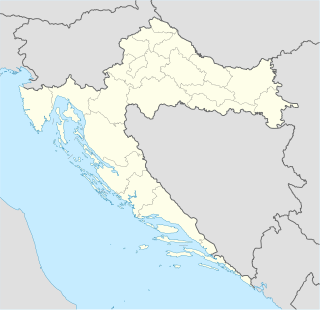
Crnac is a village and municipality in Croatia in the Virovitica–Podravina County. It has a total population of 1,456, distributed in the following settlements:

Sveti Filip i Jakov is a municipality in Croatia in Zadar County. It has a total population of 4,606, in the following settlements:
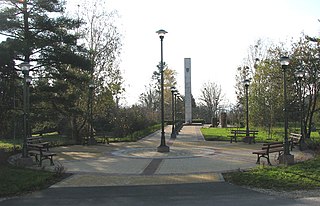
Jakovlje is a municipality in Croatia, in Zagreb County. According to the 2011 census there are 3,930 inhabitants, a majority of which are Croats. The municipality consists of three settlements: Igrišće, Jakovlje and Kraljev Vrh.

Rakovec is a village and a municipality in Croatia in the Zagreb County. According to the 2011 census, there are 1,252 inhabitants in the municipality, 98% of which are Croats.

Lasinja is a village and a municipality in Karlovac County, Croatia. The prehistoric Lasinja culture is named after Lasinja.
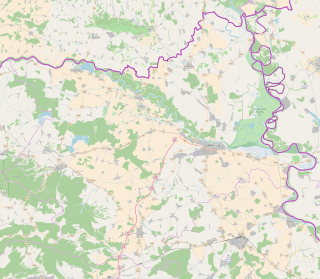
Koška is a municipality in Osijek-Baranja County, Croatia. There are 3,980 inhabitants, 89.5% of whom are Croats. The rest of population is made up mainly of Slovaks and Serbs.

Velika Mlaka is a village in Croatia.

Mlaka is a village in central Croatia, in the municipality of Jasenovac, Sisak-Moslavina County. It is a new territorial organization that has been formed from the former large municipality of Novska.
Gornja Lomnica is a settlement of Velika Gorica, which is part of the Zagreb metropolitan area, Croatia. The population is 580.

Mlaka Antinska is a small village in the municipality of Tordinci, Vukovar-Srijem County, Croatia. Village is closely related with neighboring village of Antin. Mlaka Antinska is faced with the challenge of population decline caused by the post-Croatian War of Independence economic situation. Population decline intensified in the aftermath of the 2013 enlargement of the European Union with number of people emigrating to the United Kingdom, Ireland and Germany. Some local inhabitants compared the issue with the depopulation of the Great Plains in the United States.

Zapužane is a village in the municipality of Benkovac, Zadar County, Croatia.
